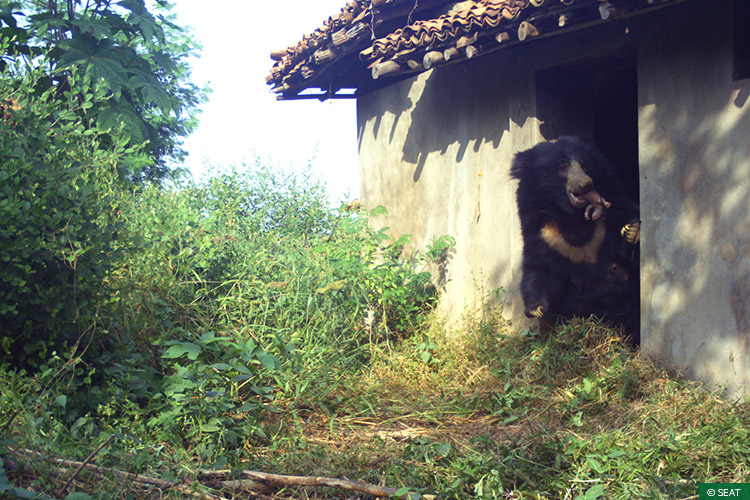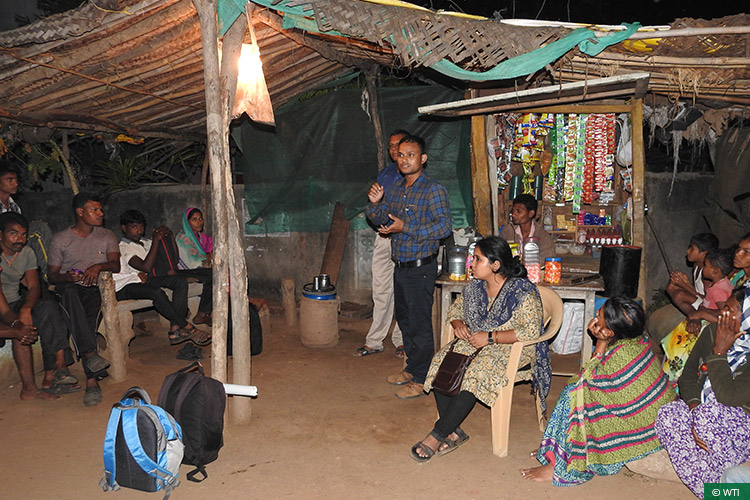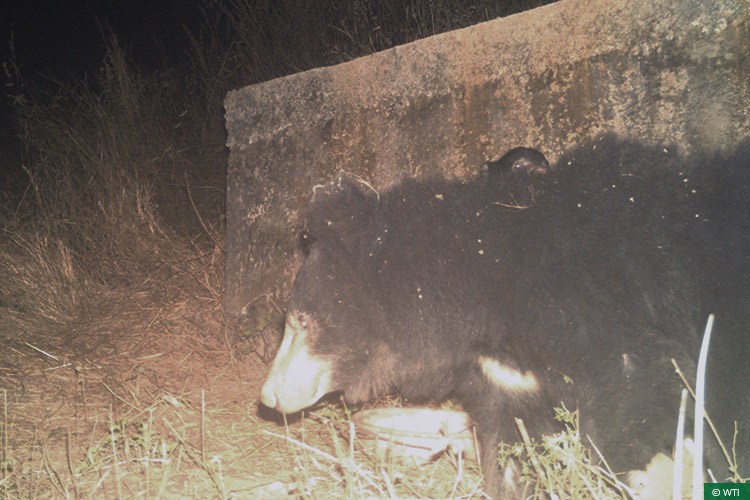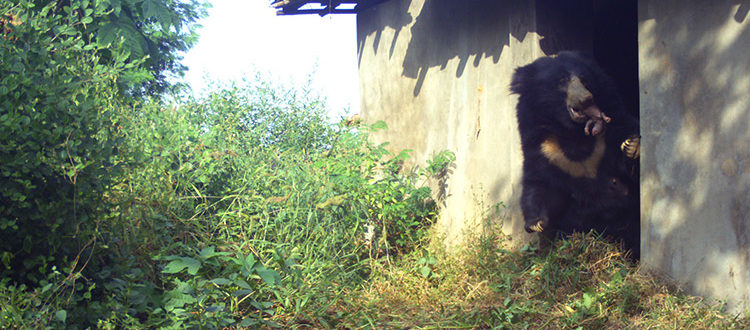In the Lap of Humanity
By Anil K Nair and Mahendra Raut
Common perception has painted the sloth bear as a ferocious beast, one that mauls and kills humans without provocation. Yet what most people don’t realise is that this species is actually quite shy and avoids contact with humans as far as possible.
The mythos of unprovoked aggression has perhaps arisen due to the sloth bear’s poor eyesight and hearing, which allows people to get quite close to it, provoking a belligerent response in what the bear considers self defence. Further, sloth bear mothers are fiercely protective of their cubs (one recorded encounter tells of a female with cubs prevailing against attacks by two tigers in quick succession) and are known to seek out naturally fortified dens to birth their young – and of course in these times of shrinking forest habitats sometimes abandoned buildings or sheds serve their purpose instead, bringing them into conflict with humans.
One simple way to avoid conflict is to avoid confronting or provoking sloth bears. This may be easier said than done, but it is not impossible.
 The Chiklabodi female bear at the abandoned structure she was using as her den
The Chiklabodi female bear at the abandoned structure she was using as her den
The Goldilocks Inversion
A few months ago, two mama bears in the Bhandara district of northern Vidarbha, Maharashtra, chose human habitations to birth their young. One made itself comfortable in an abandoned house on the edge of Chiklabodi village, about 13 km from the town of Lakhani; the other settled into a culvert in Jamnapur, a village near Sakoli. What ensued is an increasingly common occurrence across India – the gathering of hostile crowds and the unwarranted incrimination of the wild animal as a potent threat to human life.
The Chiklabodi incident came to light on November 9 and the local forest department called in teams from Wildlife Trust of India (WTI) and Save Environment and Tiger (SEAT) to manage the situation. The teams proceeded to the village where they met Salamudhin Shaik, the owner of the dilapidated structure. He had been making preparations to restore the house, he said, and had barely escaped a mauling when he had ventured into it upon hearing some strange noises.
The WTI and SEAT teams worked swiftly, bricking up the exit that faced the rest of the village. The moment this was done, though, a large number of villagers gathered and began aggressively demanding that the bear be removed – else they would kill it. A series of meetings with the village’s police representative (police patil), headwoman and president of the Joint Forest Management Committee (JFMC) followed. Finally, the teams managed to convince the village’s who’s who that the safety of people would be ensured, provided they all cooperated. A meeting was called at the village junction and WTI’s Rapid Response Team (RRT) explained the very simple precautionary measures that the villagers needed to take to avoid conflict with the denning female bear.
 A community sensitisation meeting underway at Chiklabodi
A community sensitisation meeting underway at Chiklabodi
People being people, though, there was vehement opposition to the bear’s continued presence. The villagers had their justifications – a sour experience with a denning leopardess earlier, where promises made by the local authorities had not been fulfilled. But even though many of them left the gathering dissatisfied, it appeared that the open dialogue had helped; they subsequently allowed the teams to conduct their activities without much hindrance.
Over the course of the next day, all routes from the house towards the village were blocked, leaving just one opening leading towards the forest. Team members also scattered mahua flowers (which sloth bears apparently love) on this pathway, and installed camera traps to monitor the mother bear’s movements.
On November 11 the second case, of the sloth bear denning inside a culvert in Jamnapur village came to light. WTI and SEAT teams addressed the situation here similarly – continually negotiating with and attempting to sensitise the agitated villagers, and cordoning off the den sites to prevent people, especially children, from accidentally venturing too close. Both sites were carefully monitored by SEAT and WTI staff; people from the two villages were also kept abreast of the bear’s movements and the message to avoid confrontation was constantly emphasised.
The careful vigil finally bore fruit at the turn of the New Year : both mother bears walked out of their denning sites and back into the forest (the Jamnapur bear on January 5 and the Chicklabodi bear on January 8) with their little ones clinging to their fur. Their struggle to ensure their cubs’ survival will continue; the cubs will be completely dependent on them for six months to a year at least, during which time they will feed them and defend them against the numerous perils of the wilderness.
But their amicable departure from human habitations has set an example, one that we hope will resonate beyond the two villages involved. It will perhaps make people realise that wildlife can, with care, thrive conflict-free even in the lap of humanity.
 The Jamnapur female heads towards the forest with her cubs
The Jamnapur female heads towards the forest with her cubs
Anil Nair is the Project Head and Mahendra Raut is the Field Sociologist of Wildlife Trust of India’s Vidarbha Tiger Project









